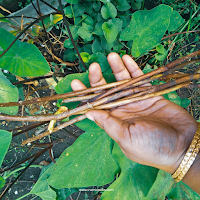Hello everyone ! I am back after a long time. As I was tested Covid-19 positive last October, so this break was much needed. But as I am back now, I will try to write new blog posts every week on different interesting and amazing food and recipe topics of Assamese cuisine.
As the second phrase of Covid has begun in many countries, we need to be more careful now and should follow strictly the guidances provided by World Health Organisation to protect ourselves and the people around us from caronavirus.
Here is a quick look at the precautions we need to follow strictly to prevent the spread of Covid-19:
- Keep physical distancing and wear a mask in public where physical distancing is not possible.
- Clean your hands often with soap and water. Use hand sanitizer and carry a hand sanitizer with you while going out.
- Maintain a safe distance from person who is sneezing and coughing.
- Don't touch your eyes, nose and mouth.
- Seek medical attention if you have fever, caught or difficulties in breathing.
(Click here) to know about some food safety tips to follow during Covid 19.
Today, I am going to share a very delicious taro stolons with bamboo shoots recipe. Taro stolons in Assamese is called Kochur loti (কচুৰ লতি). Stolons are the creeping horizontal stems of taro plants which are edible and used as a vegetable in Assamese and Bengali cuisines. Taro stolon cooked with shrimps and fish head are famous recipes of Bengali cuisine. Beside taste, taro stolons have some health benefits too as they are one of the finest source of dietary fiber.
Today I picked some stolons of taro from my small kitchen garden and cooked with fermented bamboo shoots (khorisa).
 |
| Freshly picked taro stolons |
Fermented bamboo shoots can be prepared from fresh bamboo shoots. Fresh bamboo shoots are sliced or grated and than preserved in airtight container for few days by adding some water. When it becomes sour, it can be used in making pickles and used in many dishes. To know more about how to ferment and preserve bamboo shoots (click here) .
Taro stolons with bamboo shoots can be served as a side dish with steamed rice. Get the recipe below :
Kochur Loti Recipe :Taro Stolons with Bamboo shoots
📎Course : Side Dish
📎Cuisine : Indian
🔪Preparation Time : 30 minutes
♨Cooking Time : 30 minutes
🕞Total : 1 hour
🍴Servings : 2
🍴Servings : 2
 |
| Taro stolons with bamboo shoots |
INGREDIENTS:
- 1 bunch of taro stolons
- 1 tbsp ginger garlic paste
- 1 onion, chopped
- 1 tomato, chopped
- 2-3 tbsp fermented bamboo shoots (khorisa)
- 1/2 tsp turmeric
- 1/2 tsp red chilli powder
- 2 tbsp mustard oil
- Salt to taste
METHOD:
- With the help of a sharp knife remove the thin skin of taro stolons.
- Cut the stolons into 2" long pieces.
- Was stolons under running water.
- In a pan boil stolons for 5-6 minutes. Drain and keep aside.
- Heat oil in a pan.
- Add ginger garlic paste.
- Add chopped onions and fry till translucent.
- Add chopped tomatoes and cook until oil separates.
- Add fermented bamboo shoot. Mix well.
- Add turmeric powder.
- Add red chilli powder.
- Add boiled taro stolons.
- Add salt and mix everything well.
- Cook until stolons become tender and melts properly.
- Serve hot as a side dish with steamed rice.


Comments
Post a Comment